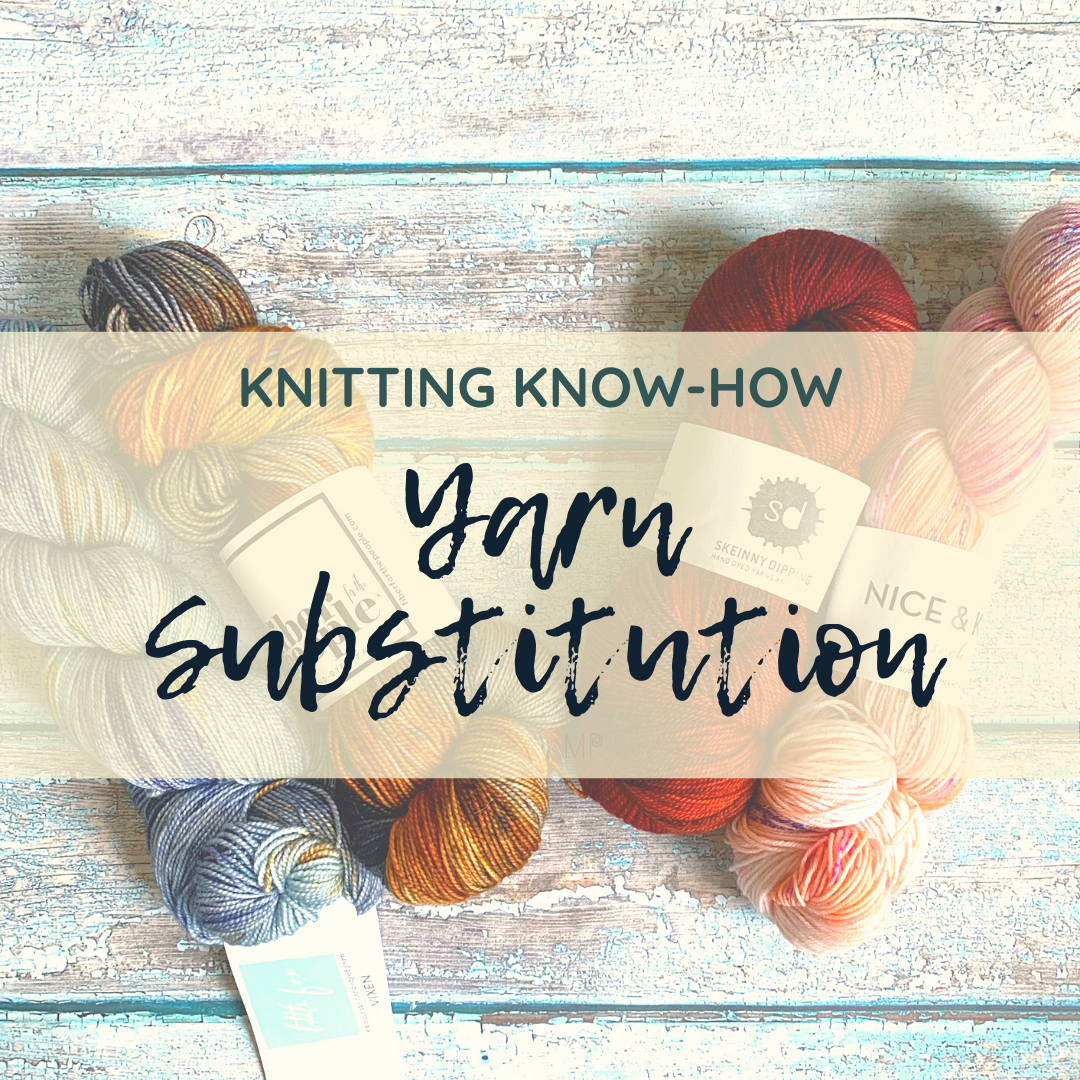The Ins and Outs of Substituting Yarn
As we discussed a few weeks ago, one of the few perks of designing (you know, in addition to making less than minimum wage and having to explain your job to people over and over again) is the occasional opportunity to use beautiful yarn from generous indie dyers for pattern samples. Designers aren’t, for a number of reasons, able to provide alternative yarns in many cases—but that never means you have to use the same yarn for your project.
Personally, I think picking out yarn for a new project is one of the most fun parts of the whole experience. I think I can count on one hand the number of times I’ve used the yarn called for in a pattern, whether it was too expensive, I wanted to work from stash, or any number of other reasons.
That said, you shouldn’t do it on a whim—you should be armed with knowledge. Substituting yarn isn’t an exact science, but a little bit of know-how goes a long way.
I’ve recently uploaded a video tutorial on yarn substitution to my YouTube channel, and just in case you don’t generally take notes on YouTube videos, here’s a written synopsis of the key takeaways.
I cover 4 primary considerations: weight, fiber, construction and color.
Yarn weight
Weight (fingering, DK, worsted, etc) is loosely defined and not always accurate; don’t get bogged down in the name
When “auditioning” yarn, check the recommended gauge (sts per inch) for your potential yarn and compare it with the pattern gauge; if they’re in the same ballpark, you’re more likely to get similar fabric to the sample (assuming that’s what you’re going for)
If you achieve gauge and are happy with the fabric, it’s the right weight for your project
Fiber
Matching the fiber content of the recommended yarn fairly closely is always your best bet, especially for sweaters, to ensure a similar drape and wear
Learn how different fibers behave to guide you in making substitutes
Alpaca and silk are drapey
Nylon adds strength
Wool adds structure
Construction: Consider both plying and spin
Plying: how tightly or loosely the plies (strands) are twisted together, and the number of plies
Yarn with more plies and tightly plied (ie, twisted together) yarns are
“rounder” with better stitch definition
sturdier and harder wearing
tend to pill less (but fiber also plays a role!)
Yarns with fewer (or single) plies and loosely plied together yarns are
“flatter” with less stitch definition (but often more drape, depending on the fiber)
less hard wearing (bad for socks, good for shawls)
more prone to pilling
Spin: the way the strands of yarn are created; woolen (a less dense, more rustic spin with more air) vs. worsted (a firmer, more consistent spin trapping less air)
Worsted spun yarns are
smoother, denser and firmer
more durable
heavier
take color more evenly
Woolen spun yarns are
warmer
lighter
fuzzier
take color less consistently
The spin and the plying will converge to create the ultimate structure of the yarn
You do not have to match the construction of the sample yarn exactly, but understand that a woolen spun, loosely plied yarn will create a very different fabric than a worsted spun, tightly plied yarn
Color
Color is very personal, but work toward a similar style of color—solid, tonal, heather, variegated
Resources for yarn substitution:
yarnsub.com: enter the name of the yarn you want to replace and it will give you other options
Knit Picks: lots of affordable yarn; they’re not all winners but most are good quality
WEBS: oodles of yarn and bulk purchase discounts
Green Mountain Spinnery: check it out for reasonably priced, breed specific, rustic-style yarns
The Fleece and Fiber Sourcebook: read up on different fibers and their qualities

